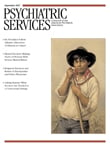In Reply: We are pleased that Lenz and Houlihan's notions of the contributions and limitations of our study converge with our own, and we welcome the opportunity to address these issues in more detail.
First, the authors note that the vignettes describing adult and child depression were not identical. As we acknowledged, the inclusion of suicidal ideation in only the child vignette may have skewed public attitudes. However, the similarity in participants' ratings of danger to self for the adult and the child suggests that suicidal ideation was not a "red flag" for respondents. Moreover, both vignettes, which were developed by psychiatrists, represent the typical symptom profiles of adults and children meeting DSM-IV criteria for major depression. Because suicidal ideation is of particular importance in the clinical assessment of childhood depression, its presence in the vignette is appropriate.
Second, the six-year lag between the two surveys may account for the observed differences. One possibility that Lenz and Houlihan mention—that public attitudes toward children with depression were shaped by media reports linking school violence to mental illness—is, in fact, one explanation we offered. There are no data to directly test this assertion, but it remains a plausible interpretation. However, it is telling when the public views youths with depression as more dangerous than adults with depression. The cultural origins of public attitudes are of little consolation to providers, families, and children who face barriers to treatment and recovery.
Third, Lenz and Houlihan suggest that our results might have been different had the comparison been conducted in the 1990s. In fact, there were several highly publicized workplace shootings in 1995 and 1996, which suggests that the serendipitous timing of the 1996 and 2002 General Social Survey provides an apt comparison of the media-propagated culture of fear surrounding adults and children with depression. Moreover, if these workplace shootings skewed attitudes toward adults with depression negatively, our analyses may actually have underestimated differences in attitudes toward adults and children.
Fourth, as noted in our introduction to the series (
1 ), the age of the vignette child (eight or 14 years old) varied randomly. Respondents believed that the problems of the 14-year-old were more serious (Pescosolido BA, Jensen P, Martin JK, et al, unpublished manuscript, 2006), and they were more likely to prefer social distance from the 14-year-old (
2 ). However, post hoc analyses revealed that the public did not believe that adolescents with depression were more likely than children to harm others. This finding suggests that both are vulnerable to stigmatization associated with perceptions of dangerousness.
Finally, regarding the use of power and the binary coding, we ran t tests as well as multinomial logistic regression analyses using the categorical dependent variables. These results led us to the same conclusions as those obtained by use of binary logistic regression models. We presented odds ratios to facilitate interpretation of the effect magnitude of receiving either a child or an adult vignette.
We hope that future research will continue to raise questions about how the public views mental illness among children, adolescents, and adults. Understanding the larger cultural context will assist clients, providers, and families in overcoming challenges associated with stigma.

